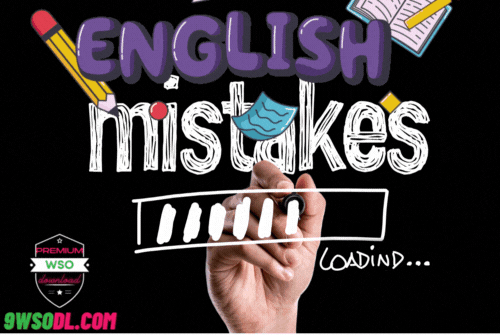English
Top 8 Common Mistakes in English

It is common for learners to make the following mistakes in English due to its diversity and extensiveness. Even native speakers have difficulty handling it at times. The following list outlines common mistakes in English that you too may often make without realizing that they are errors.
Phonemes mixed up
Languages may have certain sounds, but they may not be present in others. Students often fail to map symbols with sounds or confuse their pronunciation. The -th sound is often ignored by students when pronouncing words like ‘think’ or ‘thought’ as ‘fink’ or ‘sought’.
Leaving out the ‘have’ before a past participle
When conjugating a verb in the past perfect tense, most learners tend to drop their ‘have/has’. They tend to say ‘I seen’ instead of ‘I’ve seen’ or ‘I been’ instead of ‘I’ve been’. They usually make this mistake by abbreviating the ‘have/has’ to ‘I’ve’, ‘They’ve’, ‘She’s’ etc. Eventually, they forget to use the abbreviation altogether, stressing on it.
Direct translation from the native tongue
Accurately translating a language means taking into account the distinct idioms, verbal expressions, and grammatical rules specific to the target language. For instance, the phrase ‘fold the clothes’ is not accurately conveyed by using ‘bend’ –the literal translation from another language—without knowledge of its appropriate use in English. That being said, learners may unintentionally make such mistakes if they are not familiar with usage of the language in real life. Thus, it is vital to learn how to speak or write in English instead of solely focusing on word-for-word translations.
Prepositions used incorrectly
There are many prepositions that are expected to follow verbs: listen to, wait for, based on, believe in, suffer from, etc. Learners tend to forget these prepositions or use one that is incompatible with the verb. Learning the proper application of each verb – preposition pair requires reading and using the language in a speech, since studying a list as such is difficult.
There is a confusion between the subject and verb
Students often fail to establish a subject-verb agreement. They either mispronounce the verb or disregard the distinction between singular and plural verb conjugations. For example, students may present this sentence as ‘She likes to eat apples.’
Using the same tenses throughout
Some learners get comfortable with one tense and use it in every situation. Instead of saying ‘I work now’ or ‘I am working now’, they may say ‘I have been working here for five years’, but this sentence can be rephrased appropriately to ‘I have worked here for five years’.
Adding too many or omitting articles
It is common for language users to forget to add articles or simply add too many. Some might say ‘This is the tree’ or ‘This is the tree’, but in both cases, the correct application of articles would be ‘This is a tree’ or ‘This is the tree’.
Changing the structure of questions
Forming questions may be deceptively simple, but for language learners it can be bewildering. Learners often jumble words in their queries; for example, asking ‘What today is day?’ instead of ‘What day is it today?’. Similarly, when someone wants to know ‘Where are you going?’, they might say ‘Where you are going?’ The fact that English is not a first language for most learners means mistakes like these occur frequently and naturally. Even for native speakers the language can often prove tricky. However, regular reading, speaking and exposure to the language helps to overcome this obstacle. It’s useful to compile a list of common errors in English, as this raises further issues itself.
It’s them vs. it’s them vs. it’s them
Effect vs. Affect
I vs. me
The difference between you and you’re
Is vs. Isn’t
Comparisons that are incomplete
Modifiers that dangle
Passive voice
An entity or brand is referred to as “they.”
The difference between too and too
Pique vs. peak
By A.J Hoge – The Author of Effortless English
For Effortless English VIP Program – Check out:

